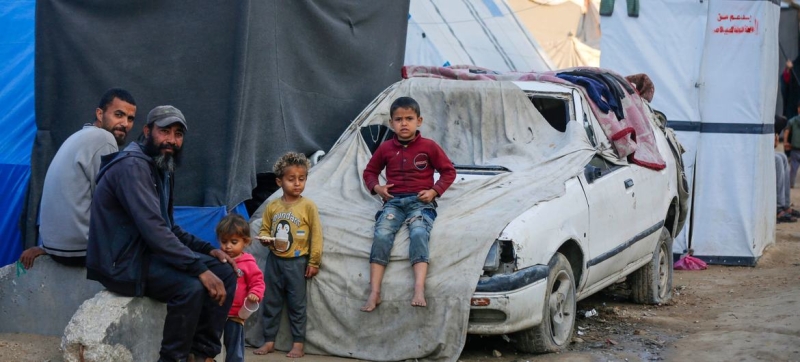
At least 1.9 million people – about 90 percent of the Strip’s population – are displaced, according to UN humanitarian agencies. War in Gaza: Fighting continues in the sector amid information about an imminent truce Peace and Security
Israeli forces continue to strike the Gaza Strip from the air, land and sea, causing civilian casualties and destroying homes and public infrastructure. Palestinian armed groups, in turn, are firing rockets at Israel.
According to media reports, the Israeli cabinet on Thursday postponed a vote on a ceasefire agreement with Hamas, as the Palestinian group backed out of a number of agreements at the last minute.
Read also:
UN chief welcomes ceasefire and hostage release agreement in Gaza
Meanwhile, in northern Gaza, Israeli troops have been conducting a ground offensive for more than 100 days under a tight blockade of the area. Intensive military operations continue amid an almost complete lack of humanitarian aid, as well as serious disruptions to communications and the Internet.
Some areas of Northern Gaza have been under a tight siege for more than three months. Access to them remains extremely difficult, and attempts by humanitarian organizations to deliver aid to the area continue to be largely thwarted by Israeli troops. As a result, thousands of people are left without food, water, electricity and medical care.
The acute fuel crisis also poses a serious threat to humanitarian operations in Gaza. According to the UN Office for the Coordination of Humanitarian Affairs (OCHA), all of the strip’s partially functioning hospitals have exhausted their reserve fuel stocks and are entirely dependent on outside supplies.
Latest Death toll
According to an analysis published by the NGO Save the Children, in 2024, an average of 475 children a month – or 15 a day – will be permanently disabled by explosives in the Gaza Strip, suffering severe limb injuries and hearing loss.
According to calculations by the medical journal The Lancet, 64,260 people were killed in the Gaza Strip between 7 October 2023 and 30 June 2024. The study’s findings, however, do not include the full impact of the military operation in Gaza, as they do not take into account deaths not related to injuries and trauma, such as those caused by disrupted health services, lack of food, water, and sanitation.
According to the study, of the 28,257 deaths for which age and gender data are available, 16,699 (or about 59 percent) were women, children, and the elderly.
According to UN humanitarian agencies, at least 1.9 million people, or about 90 percent of the Strip’s population, are displaced. Many have been displaced multiple times, some 10 or more times.
